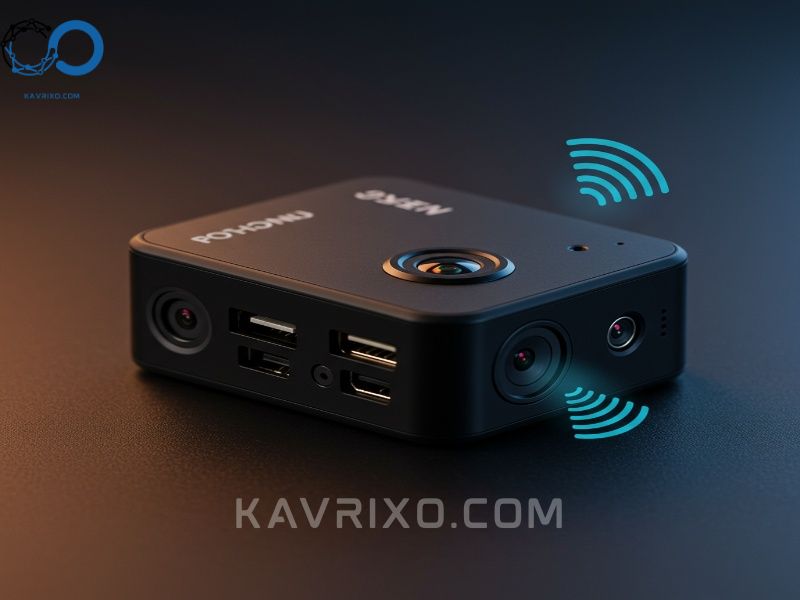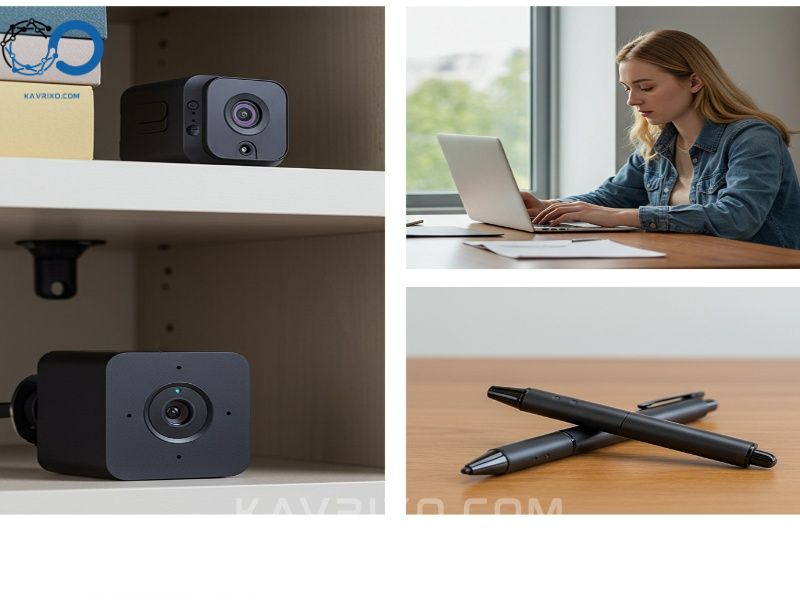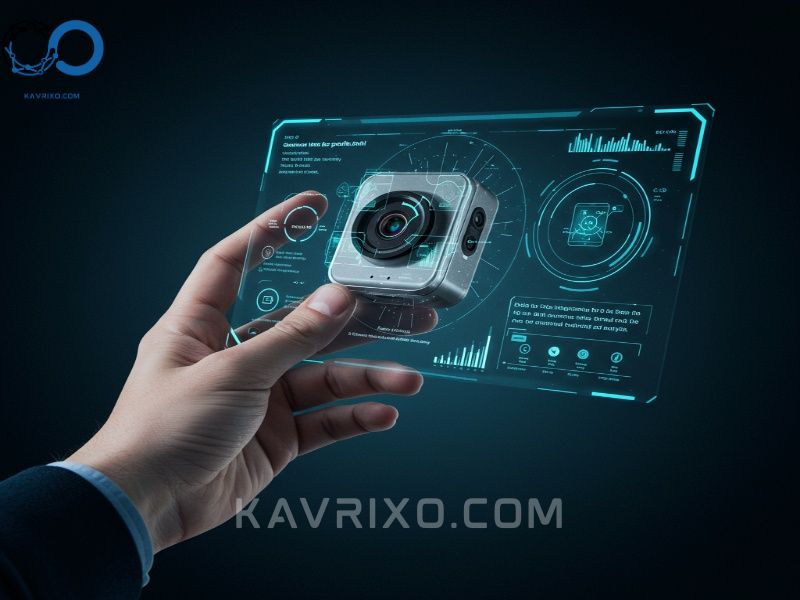The age of bulky, obvious recording equipment is rapidly fading. Today, technology is defined by discretion and portability, and nowhere is this trend more evident than in the realm of visual recording devices. The super small camera—a marvel of modern engineering—has revolutionized everything from personal security and professional inspection to creative filmmaking. These devices, often no larger than a thumb or a coin, pack incredible recording power into truly minuscule packages.
This comprehensive guide will explore the technology underpinning these devices, delve into their myriad applications, and provide the critical criteria you need to select the perfect portable mini camera for your specific needs, ensuring you understand the capabilities of the smallest video cameras available on the market today.
Contents
- 1 The Rise of the Super Small Camera: Why Size Matters
- 2 Core Applications of Really Small Cameras
- 3 Key Features to Look for in a Portable Mini Camera
- 4 Deep Dive into Categories of Smallest Video Cameras
- 5 Installation and Setup for Super Small Camera Systems
- 6 Legal and Ethical Considerations for Using Really Small Cameras
- 7 The Future Landscape of Super Small Camera Technology
- 8 Conclusion: The Mighty Impact of the Miniature
The Rise of the Super Small Camera: Why Size Matters
The demand for smaller, less intrusive technology stems from a universal need for flexibility and discretion. Whether you require a specialized tool for industrial inspection or wish to deploy a robust, covert security system, the size—or lack thereof—is the primary defining characteristic.
Defining “Super Small”: What are we talking about?
When we discuss a super small camera, we are typically referring to devices that measure less than two cubic inches, often relying on internal batteries and solid-state storage. These aren’t just scaled-down versions of traditional cameras; they are fundamentally designed components where the lens, sensor, and processing unit are integrated seamlessly into the smallest possible footprint.
The defining categories include:
- Cube Cameras: Often 1x1x1 inch, these are the archetypal smallest video cameras, known for their versatility and magnetic mounting options.
- Pen/Button Cameras: Designed for maximum stealth, integrating the camera entirely into everyday objects.
- Endoscopic/Borescope Cameras: Extremely thin cameras attached to flexible cables, used for accessing confined spaces.
The driving force behind their adoption is simple: unparalleled placement versatility. A really small camera can be mounted almost anywhere, making it indispensable for niche security and documentation tasks where traditional equipment is simply too large or too noticeable.
Technological Drivers: Miniaturization and Power Efficiency
The feasibility of the modern super small camera hinges on several recent technological leaps in manufacturing:
- CMOS Sensor Evolution: Modern Complementary Metal-Oxide-Semiconductor (CMOS) sensors can capture high-definition video (1080p, 4K) while requiring significantly less physical space and power compared to older CCD technology. This efficiency is crucial for maintaining acceptable battery life in a compact housing.
- System-on-Chip (SoC) Integration: Instead of using separate processors for image processing, compression, and Wi-Fi transmission, these functions are consolidated onto a single, tiny chip. This dramatically reduces the overall volume required.
- Battery Density: Advances in lithium polymer (Li-Po) batteries allow for higher energy storage in smaller, safer formats, granting these portable mini cameras the ability to record for hours despite their limited physical capacity.
- Wireless Connectivity: The integration of compact Wi-Fi and Bluetooth modules facilitates the creation of a micro hidden camera wireless network, allowing users to monitor live feeds remotely without the need for cumbersome cabling.

Core Applications of Really Small Cameras
The utility of a really small camera extends far beyond simple consumer gadgets. These powerful miniature devices are solving complex problems across multiple industries and personal security needs.
Covert Security and Surveillance
Perhaps the most recognized application is covert monitoring. When deploying security in sensitive areas, visibility often defeats the purpose. A micro hidden camera wireless setup allows businesses and homeowners to discreetly monitor valuable assets, deter theft, or gather evidence without alerting potential intruders.
These systems are favored because they offer:
- Discretion: They can be embedded into household objects (smoke detectors, chargers, clocks) or fixtures, maintaining a low profile.
- Wide Coverage: Multiple super small cameras can be strategically placed to eliminate blind spots without cluttering the environment.
- Remote Access: The micro hidden camera wireless capability ensures that footage can be viewed instantly, regardless of the user’s location, facilitating rapid response to incidents.
Personal Safety and Wearable Tech
The movement toward personal accountability and safety has made the portable mini camera a vital tool for many professionals and citizens. Body-worn cameras, often disguised as lapel pins or glasses, provide undeniable documentation of interactions.
For adventurers, cyclists, or extreme sports enthusiasts, a portable mini camera offers a lightweight way to capture high-definition footage without adding significant bulk or weight to their gear. These ruggedized versions are designed to withstand vibration, moisture, and impact, ensuring reliable recording during high-octane activities.
Specialized Professional Use
In commercial and industrial settings, the small size of these cameras translates directly into increased efficiency and reduced risk.
Industrial Inspection and Maintenance
Technicians rely on smallest video cameras attached to flexible borescopes to perform non-destructive testing (NDT). They can inspect the internal components of machinery, pipes, HVAC systems, and aircraft engines without costly disassembly. The high-resolution output ensures that hairline cracks, corrosion, or blockages are clearly visible, saving time and money.
Drone and Robotics Integration
The efficiency of drones is directly tied to their payload capacity. By using super small cameras, drone operators can maintain maximum flight time and maneuverability while still capturing cinema-quality aerial footage or performing high-resolution mapping and surveying. Similarly, specialized search-and-rescue robots utilize these compact cameras to navigate rubble and confined spaces.

Creative Filmmaking and Unique Perspectives
Filmmakers and content creators have embraced the really small camera for its ability to capture perspectives previously deemed impossible. Placing a camera directly on an object, within a miniature set, or in the middle of a dynamic action sequence opens up entirely new visual narratives.
The light weight and minimal footprint mean these cameras can be mounted to animals, vehicles, or moving props, achieving immersive, first-person views that traditional, larger cameras could never safely or effectively capture. This creative freedom has led to groundbreaking shots in commercials, documentaries, and independent films.
Key Features to Look for in a Portable Mini Camera
Selecting the right device requires moving beyond just size. While the goal is always a super small camera, the performance specifications must align with the intended application. Here are the critical factors to evaluate before purchasing any portable mini camera or smallest video cameras system.
Resolution and Frame Rate: Capturing Detail
While miniaturization is impressive, poor video quality renders the footage useless.
- Resolution (1080p vs. 4K): For security or evidential recording, 1080p (Full HD) is generally the baseline requirement. However, 4K resolution is increasingly available in even the smallest video cameras. Higher resolution is vital for digital zooming and identifying fine details, such as license plates or faces, after the recording is complete.
- Frame Rate (FPS): A frame rate of 30 frames per second (FPS) provides smooth, realistic video. For capturing fast action or specialized industrial analysis, look for cameras offering 60 FPS or higher, which minimizes motion blur.
Battery Life and Power Management
The biggest constraint for any truly super small camera is power. Due to the limited physical space, battery capacity is finite.
- Internal Battery Runtime: Most high-quality portable mini cameras offer between 60 minutes and 3 hours of continuous recording on a fully charged internal battery. If your application requires longer monitoring without external charging, look for models optimized for low-power standby mode or those that support power bank connections.
- Power Source Options: For permanent surveillance, choose a really small camera that can run indefinitely while plugged into a wall adapter (USB power). This circumvents the internal battery limitations entirely.
Connectivity: The Power of Micro Hidden Camera Wireless Systems
Wireless functionality transforms a simple recorder into a dynamic monitoring tool.
- Wi-Fi Capability: A micro hidden camera wireless system allows for real-time streaming to a smartphone or computer. This is essential for positioning the camera correctly and checking the live feed without physically accessing the device. Look for cameras supporting the 5GHz band for faster, more stable connections, especially in congested areas.
- Remote Access (P2P/Cloud): The best systems offer Peer-to-Peer (P2P) connection or cloud integration, enabling access to the camera feed from anywhere in the world using a dedicated app.
- Local Hotspot: Some small cameras create their own local Wi-Fi hotspot, allowing connection and download even without an existing home network, crucial for field use.

Storage Solutions: Local vs. Cloud
How the footage is stored dictates accessibility and reliability.
- Local Storage (MicroSD): Virtually all smallest video cameras rely on MicroSD cards (up to 256GB is common). Ensure the camera supports loop recording, which overwrites the oldest files once the card is full, preventing recording gaps.
- Cloud Storage: Many micro hidden camera wireless systems offer optional cloud storage subscriptions. While this adds a recurring cost, it provides an invaluable backup, ensuring footage is secure even if the camera unit itself is damaged or stolen.
Durability and Environmental Resistance
If the super small camera is intended for outdoor use or harsh environments (like industrial inspection), it needs appropriate protection. Look for IP ratings (Ingress Protection) that indicate resistance to dust and water. An IP65 rating or higher is recommended for outdoor or dusty applications.
Deep Dive into Categories of Smallest Video Cameras
Understanding the structural differences between categories is crucial for choosing the right tool for the job.
Body-Worn and Pen Cameras
These are the pinnacle of discreet recording. They are designed primarily for personal security, evidence gathering, or documentation in sensitive fields (journalism, private investigation).
- Pen Cameras: These function as standard writing instruments but house the lens, battery, and storage within the barrel. They are extremely effective for close-range, face-to-face interactions.
- Button/Screw Cameras: These kits include a tiny camera module connected via a thin ribbon cable to a separate recorder unit. The lens itself can be threaded through fabric or a small hole, making it virtually invisible. While complex to set up, they offer maximum stealth.
Cube and Thumb-Sized Cameras (The Archetypal Super Small Camera)
The cube camera is the most popular type of super small camera due to its balance of size, features, and ease of use.
- Versatility: Their cubic shape allows for easy concealment in corners, behind books, or inside custom enclosures. Many include integrated magnetic mounts.
- Feature Rich: Despite their size, modern cube cameras frequently include motion detection, night vision (using invisible IR LEDs), and Wi-Fi connectivity, functioning as sophisticated, miniature security systems.
Integration Devices (Cameras Disguised in Everyday Objects)
For long-term, passive surveillance, integrated devices offer the simplest solution. These include cameras built into:
- USB Wall Chargers: Since USB chargers are ubiquitous, a model with a built-in camera is highly inconspicuous and benefits from constant power supply.
- Digital Clocks/Alarm Clocks: These offer large battery capacities or permanent power and usually provide a clear line of sight from a nightstand or desk.
- Smoke Detectors: Mounted high up, they offer a wide, unobstructed view of an entire room, making them ideal for complete coverage security solutions.

Installation and Setup for Super Small Camera Systems
Proper deployment is just as important as the quality of the device itself. A poorly placed really small camera can miss critical events or capture unusable footage.
Strategic Placement for Optimal Coverage
When positioning your super small camera, consider the following:
- Field of View (FOV): Check the camera’s specifications. Wide-angle lenses (120° or more) are better for capturing entire rooms, but they often introduce a slight “fisheye” distortion.
- Light Sources: Avoid placing the camera directly facing bright windows or strong light sources, as this can silhouette subjects and ruin the exposure. Utilize night vision capabilities in dark areas.
- Discretion: If using a micro hidden camera wireless setup for covert security, ensure the device blends seamlessly into the environment. Use natural obstructions (bookshelves, plants) to obscure the camera body while maintaining clear lens visibility.
Setting Up Wireless Micro Hidden Camera Networks
For multiple units, creating an effective network requires careful planning:
- Router Proximity: Ensure each portable mini camera is within reliable Wi-Fi range. Repeated signal drops will disrupt streaming and lead to gaps in cloud recording.
- Dedicated Network (Optional): If deploying many smallest video cameras, consider setting up a dedicated 2.4GHz network specifically for IoT and camera devices. This prevents the cameras from bogging down your main network.
- Security Protocols: Always change the default username and password on your super small camera system. Since these devices are constantly connected, they can be vulnerable to hacking if left unsecured.
Calibration and Motion Detection Sensitivity
Effective security relies on accurate alerts, not constant notifications.
- Sensitivity Tuning: Calibrate the motion detection sensitivity to avoid false alerts triggered by pets, shadows, or changing light conditions. Higher-end really small camera models offer adjustable zones, allowing you to ignore high-traffic areas and focus only on entry points.
- Pre-Recording Buffering: Look for systems that offer a pre-recording buffer (e.g., 3-5 seconds). This ensures that when motion is detected, the recording includes the moments just before the event, providing crucial context.

Legal and Ethical Considerations for Using Really Small Cameras
The power of discretion inherent in a super small camera comes with significant legal and ethical responsibilities. Misuse can lead to severe legal penalties, particularly regarding privacy laws.
Privacy Laws and Consent Requirements
It is critical to understand the difference between public and private spaces:
- Public vs. Private: Generally, recording in public spaces where there is no expectation of privacy (e.g., a street or a front yard) is permissible. However, recording conversations often falls under two-party consent laws, meaning everyone involved must agree to be recorded.
- “Highly Private” Areas: Placing a micro hidden camera wireless system in areas where privacy is explicitly expected—such as bathrooms, bedrooms, or changing rooms—is almost universally illegal and considered a felony, regardless of local state laws.
- Workplace Rules: If deploying really small cameras in a commercial setting, employees must generally be notified that surveillance is taking place, even if the cameras are discreet. Laws regarding employee monitoring vary significantly by jurisdiction.
Responsible Use in Commercial Settings
Businesses using smallest video cameras for loss prevention or internal auditing must establish clear policies:
- Clear Purpose: The use of discreet cameras must be justified by a clear security purpose (e.g., protecting cash registers, monitoring inventory).
- Data Protection: Footage collected by a portable mini camera must be stored securely and accessed only by authorized personnel to comply with data protection regulations.
Always consult local laws regarding surveillance and recording before installing any super small camera system, especially those designed for covert use.
The Future Landscape of Super Small Camera Technology
The evolution of the super small camera is accelerating, promising even more powerful, efficient, and intelligent devices in the near future.
AI Integration and Smart Monitoring
The next generation of smallest video cameras will rely heavily on artificial intelligence processed either on the device (edge computing) or in the cloud.
- Advanced Object Recognition: Future portable mini cameras will be able to distinguish accurately between a human, a pet, or a vehicle, dramatically reducing false alerts.
- Facial Recognition: For authorized access and security, AI will enable cameras to quickly identify known individuals and alert security only when unrecognized people are present.
- Behavioral Analysis: Cameras will move beyond simple motion detection to analyze patterns of behavior, flagging anomalies that might indicate suspicious activity before an incident even occurs.
Enhanced Battery Density and Sustainability
Engineers are continually pushing the limits of battery technology. We can expect future super small cameras to offer multi-day runtimes without increasing the physical size of the unit. Furthermore, focus is shifting toward sustainable materials and energy harvesting techniques, potentially allowing very small cameras to draw minimal power from ambient light or vibrations, leading to truly set-and-forget micro hidden camera wireless devices.

Conclusion: The Mighty Impact of the Miniature
The super small camera is far more than a novelty; it is a serious piece of technology that offers unprecedented flexibility and capability in security, professional inspection, and creative endeavors. From the ultra-discreet micro hidden camera wireless systems protecting assets to the rugged portable mini camera documenting an expedition, the value of these devices lies in their ability to capture crucial information without intrusion.
As technology continues to shrink, the line between capability and size will blur further. By understanding the core features—resolution, battery life, and connectivity—you can confidently navigate the market and leverage the true potential of the smallest video cameras available today to meet your documentation and security needs responsibly and effectively.
